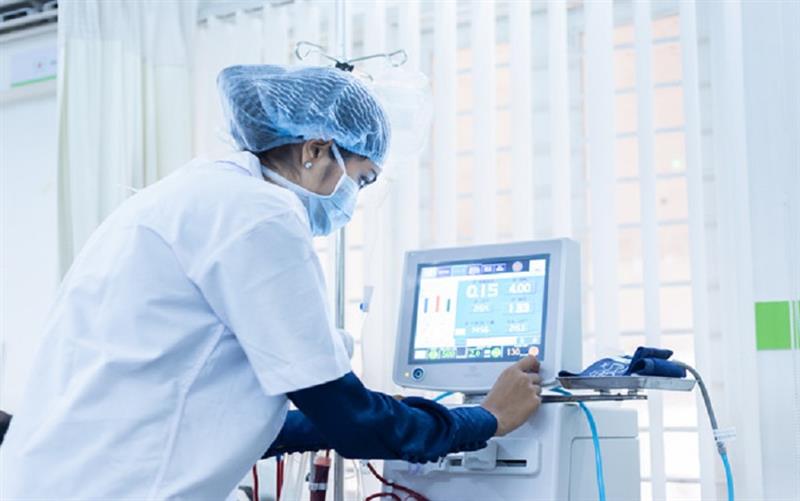
The integration of innovative software in modern patient care is revolutionizing the healthcare industry. From enhancing the accuracy of diagnoses to personalizing treatment plans, improving patient engagement, streamlining administrative processes, and enabling remote monitoring, these technologies are driving significant improvements in patient outcomes and overall healthcare delivery. As technology continues to advance, the role of innovative software in patient care will only grow, offering new possibilities for better health and well-being.
In the rapidly evolving landscape of healthcare, innovative software solutions are transforming the patient care journey from diagnosis to recovery. As technology continues to advance, healthcare providers are increasingly relying on cutting-edge software to enhance the accuracy of diagnoses, streamline treatment processes, and improve patient outcomes. This blog explores the pivotal role of innovative software in modern patient care, highlighting key areas where these technologies are making a significant impact.
1. Precision in Diagnosis
Precision in diagnosis is a cornerstone of effective patient care. Inaccurate or delayed diagnoses can lead to incorrect treatments, prolonged patient suffering, and increased healthcare costs. Innovative software solutions are at the forefront of transforming diagnostic accuracy, utilizing advanced technologies to assist healthcare professionals in making precise and timely diagnoses. Here, we delve into how these innovations are reshaping the diagnostic landscape.
- AI and Machine Learning in Medical Imaging
Medical imaging is a critical tool in diagnosing a wide range of conditions, from fractures to tumors. However, interpreting these images requires a high level of expertise and can be prone to human error. AI and machine learning (ML) algorithms are now being developed to assist radiologists by analyzing medical images with remarkable accuracy.
2. Personalized Treatment Plans
Once a diagnosis is made, developing an effective treatment plan is the next crucial step. Innovative software is playing a key role in creating personalized treatment plans tailored to each patient's unique needs. Electronic Health Records (EHR) systems, integrated with AI and ML, can analyze patient data to recommend the most effective treatment options based on historical outcomes and current best practices.
Additionally, telemedicine platforms are making it easier for patients to access specialist consultations and receive expert advice without the need for travel. This is particularly beneficial for patients in remote or underserved areas, ensuring they receive the best possible care regardless of their location.
- Electronic Health Records (EHR) Systems
Electronic Health Records (EHR) systems have transformed the way patient information is stored, accessed, and utilized. By integrating EHRs with AI and machine learning algorithms, healthcare providers can analyze patient data to recommend the most effective treatment options. These systems compile comprehensive patient histories, including past medical conditions, treatments, medications, and genetic information, enabling a holistic view of the patient's health.
3. Enhancing Patient Engagement
Engaged patients are more likely to adhere to treatment plans and experience better health outcomes. Innovative software solutions are enhancing patient engagement by providing tools that empower individuals to take an active role in their healthcare journey. Mobile health apps, for instance, allow patients to track their symptoms, medication adherence, and progress towards recovery in real-time.
Engaged patients are more likely to adhere to treatment plans, actively participate in their healthcare, and experience better health outcomes. Innovative software solutions are playing a crucial role in enhancing patient engagement by providing tools and platforms that empower individuals to take an active role in their health journey. Here’s how these technologies are making a difference.
Mobile health apps are revolutionizing patient engagement by providing easy access to health information and personalized health management tools. Patients can log their symptoms, monitor their progress, and share this information with their healthcare providers in real-time. This continuous feedback loop helps in making timely adjustments to treatment plans.
4. Streamlining Administrative Processes
Efficient administrative processes are essential for the smooth functioning of healthcare facilities. Innovative software solutions are streamlining these processes, reducing administrative burdens, and allowing healthcare providers to focus more on patient care. EHR systems, for example, automate the documentation and retrieval of patient information, minimizing the risk of errors and ensuring that healthcare professionals have access to accurate and up-to-date data.
- Electronic Health Records (EHR) Systems
Electronic Health Records (EHR) systems have become a fundamental tool in healthcare administration. They automate the documentation and retrieval of patient information, ensuring that healthcare professionals have access to accurate and up-to-date data.
5. Remote Monitoring and Telehealth
The COVID-19 pandemic has accelerated the adoption of telehealth and remote monitoring solutions, fundamentally changing the way healthcare is delivered. Innovative software is at the forefront of this transformation, enabling remote consultations, continuous monitoring of chronic conditions, and real-time data sharing between patients and healthcare providers.
Wearable devices and remote monitoring tools collect vital health data, such as heart rate, blood pressure, and glucose levels, which can be transmitted to healthcare providers for analysis. This allows for timely interventions and adjustments to treatment plans, improving patient outcomes and reducing the need for hospital visits.
Remote monitoring involves the use of wearable devices and mobile health technologies to collect and transmit patient health data to healthcare providers in real time.
6. Data Security and Privacy
With the increasing reliance on digital solutions, ensuring the security and privacy of patient data is paramount. Innovative software is incorporating advanced encryption techniques and robust security protocols to protect sensitive health information. Compliance with regulations such as the Health Insurance Portability and Accountability Act (HIPAA) in the United States and the General Data Protection Regulation (GDPR) in Europe is also being prioritized to safeguard patient privacy.
- Encryption and Secure Transmission
Data encryption is essential for protecting patient information both at rest (stored data) and in transit (data being transmitted between devices or systems). Advanced encryption algorithms convert sensitive data into ciphertext that can only be decrypted with the appropriate decryption key. This ensures that even if data is intercepted, it remains unreadable and secure.